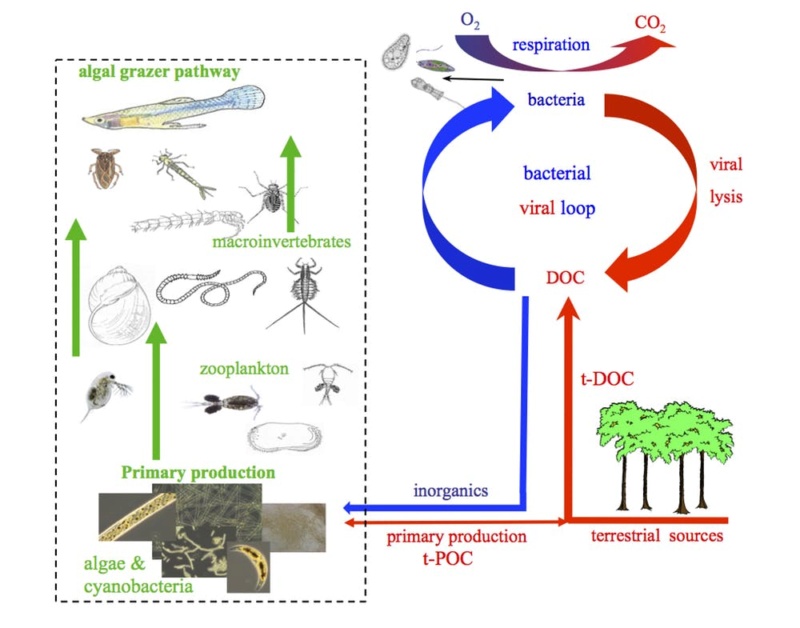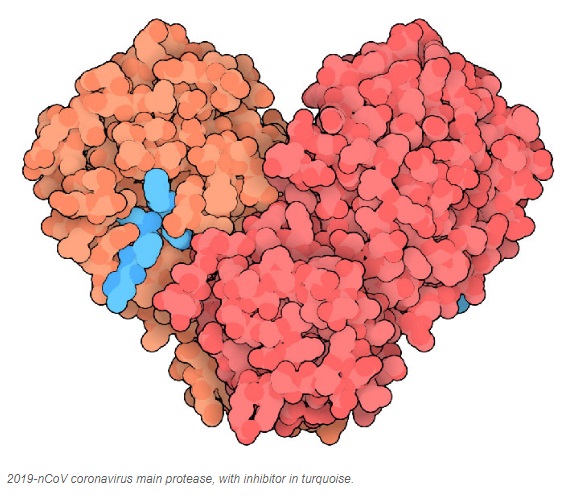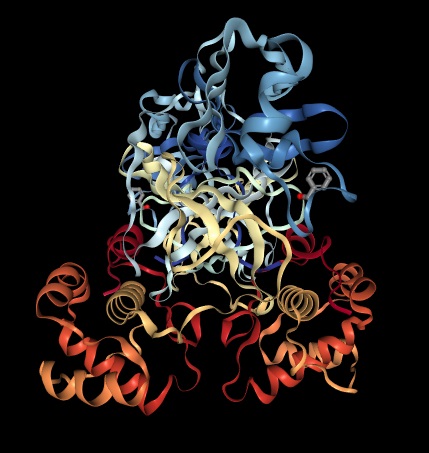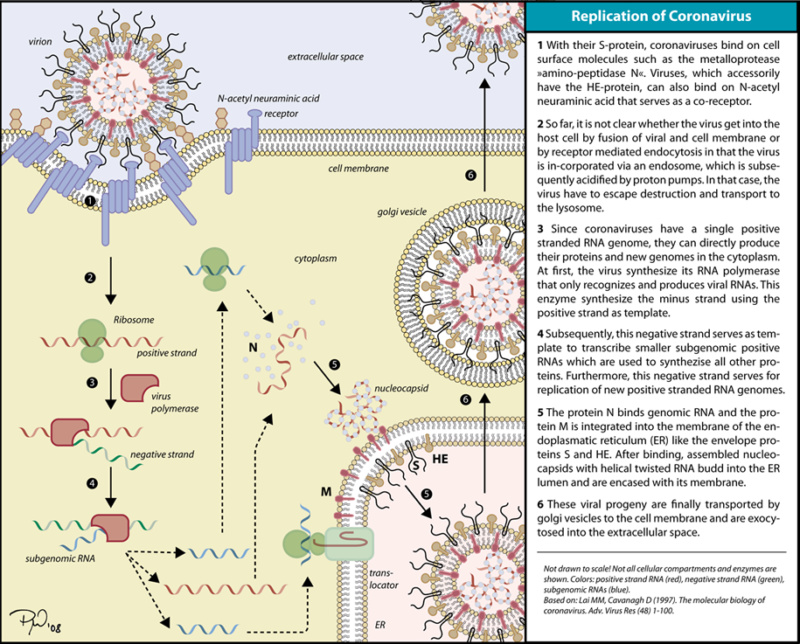Is it justified to blame God for creating pathogenic Coronaviruses ?
https://reasonandscience.catsboard.com/t2914-is-it-justified-to-blame-god-for-creating-pathogenic-coronaviruses
With the recent outbreak of the Coronavirus, some might ask: Why did God create pathogenic viruses? Does that substantiate the accusation ( so often heard, coming from the atheist camp) that God cannot be benevolent, but is evil?
Coronavirus lineages suggest that bat coronaviruses are older than those recognized in other animals and that the human severe acute respiratory syndrome from coronavirus was directly derived from viruses from wild animals in wet markets of southern China. Bats are likely the natural hosts for all presently known coronavirus lineages and that all coronaviruses recognized in other species were derived from viruses residing in bats. 11
Coronaviruses cause respiratory and intestinal infections in animals and humans1. They were not considered to be highly pathogenic to humans until the outbreak of severe acute respiratory syndrome (SARS) in 2002 and 2003 in Guangdong province, China 3
Remarkably, in Leviticus 11.13, we read:
13 “‘These are the birds you are to regard as unclean and not eat because they are unclean:....... and the bat.
The 21 viral types that wreak havoc with the human body represent an insignificant fraction of the 100 million viral types on earth. Most viruses are actually vital to our very existence. They keep ecosystems diverse and balanced.
Bacterial death is absolutely necessary for other living organisms.
Our mismanagement did put us at risk of some viruses. So we don’t know where Ebola comes from, but if we knew where it came from, would we be able to link it to mismanagement or just ignorance? We’ve encountered viruses in places where we went for pretty ecologically destructive reasons. Those viruses passing into humans and causing disease resulted from mismanagement coupled with not knowing.10
Globally the oceans contain 10^30 viruses. If you lined them all up they would extend for 10 million light-years or 100 times the distance across our galaxy. Collectively they would weigh as much as 75 million blue whales. Viruses are not living organisms. They are simply bits of genetic material (DNA or RNA) covered in protein, that behave like parasites. They attach to their target cell (the host), inject their genetic material, and replicate themselves using the host cells’ metabolic pathways.
Algae and plants are primary producers, the foundation of the world’s ecosystems. Using sunlight they turn raw elements like carbon dioxide, nitrogen, and phosphorus into organic matter. In turn, they are eaten by herbivores, which are in turn eaten by other animals, and so on. Energy and nutrients are passed on up the food chain until animals die. But what ensures that the primary producers get the raw elements they need to get started?
The answer hinges on the viruses’ relationship with bacteria. A virus doesn’t go hunting for its prey. It relies on randomly encountering a host — it’s a numbers game. When the host, such as a bacterial cell, grows rapidly, that number increases. The more of a bacterial species there is, the more likely it will come into contact with its viral nemesis — “killing the winner”. This means that no single bacterial species dominates an ecosystem for very long.
In freshwater, for example, you see very high rates of bacterial growth. You would think this high bacterial production would become part of the food chain and end up as fish food. But that is rarely the case.
We now realize that the bacteria actually disappear from these ecosystems. So where do the bacteria go?
The answer lies in the interaction of bacteria and viruses. When a virus bursts open a bacterial cell its “guts” are spewed back into the water along with all the new viruses. The cell contents then become food for the neighboring bacteria, thereby stimulating their growth. These bacteria increase in numbers and upon coming into contact with their viral nemesis they, too, become infected and lyse. This process of viral infection, lysis, and nutrient release occur over and over again. Bacteria are, in effect, cannibalizing each other with the help of their associated viruses. Very quickly, the elements that support the food web are put back into circulation with the help of viruses.

This interaction ensures inorganic nutrients are readily available to algae and plants on which ecosystems depend. It’s the combination of high bacterial growth and viral infection that keeps ecosystems functioning. Freshwater viral/bacterial interactions appear to be a critical link in carbon cycle between the land and atmosphere. 9
The Logic of Chance: The Nature and Origin of Biological Evolution, Eugene V. Koonin:
Probably an even more fundamental departure from the three-domain schema is the discovery of the Virus World, with its unanticipated, astonishing expanse and the equally surprising evolutionary connectedness. Virus-like parasites inevitably emerge in any replicator systems, so THERE IS NO EXAGGERATION IN THE STATEMENT THAT THERE IS NO LIFE WITHOUT VIRUSES.
The role of viruses in ecology
Viruses are important microbial predators that influence global biogeochemical cycles 8 They are not primarily pathogens, which is a biased view based on the history of medicine. Most viruses do not cause diseases. Viruses cause diseases if a well-established equilibrium gets out of balance. Viruses help in building genomes. Viruses and bacteria belong to the human body and our environment as a well-balanced ecosystem. Only in unbalanced situations do viruses cause infectious diseases or cancer. 7 Although bacteria pass genetic information to each other using several processes such as pili transfer (see below), viral transfer is now known to be critically important. Viruses normally do not, and should not, cause disease. Only if something goes wrong, such as a mutation or accidental inappropriate movement of genes, do they cause problems. Evidence is accumulating to suggest that most or all harmful viruses and bacteria are mutated forms of non-pathogens. Pathogenic organisms result from gene shuffling, which inadvertently disrupts the normal species-host relationship. 6
In this world of fast and easy travel, emerging viruses are increasingly becoming a major danger to world health. Coronaviruses are a notable example. Particularly virulent forms have emerged from their natural animal hosts and pose a threat to human communities. 2
Coronaviruses
Coronaviruses contain a genome composed of a long RNA strand—one of the largest of all RNA viruses. This genome acts just like a messenger RNA when it infects a cell, and directs the synthesis of two long polyproteins that include the machinery that the virus needs to replicate new viruses. These proteins include a replication/transcription complex that makes more RNA, several structural proteins that construct new virions, and two proteases. The proteases play essential roles in cutting the polyproteins into all of these functional pieces.
Proteases likely arose at the earliest stages as destructive enzymes necessary for protein catabolism and the generation of amino acids in primitive organisms. 2 Proteases act as sharp scissors and catalyze highly specific reactions of proteolytic processing, producing new protein products. They are relevant in the control of multiple biological processes in all living organisms. Proteases regulate the fate, localization, and activity of many proteins, modulate protein-protein interactions, create new bioactive molecules, contribute to the processing of cellular information, and generate, transduce, and amplify molecular signals.
As a direct result of these multiple actions, proteases influence DNA replication and transcription, cell proliferation and differentiation, tissue morphogenesis and remodeling, heat shock and unfolded protein responses, angiogenesis, neurogenesis, ovulation, fertilization, wound repair, stem cell mobilization, hemostasis, blood coagulation, inflammation, immunity, autophagy, senescence, necrosis, and apoptosis.
Consistent with these essential roles of proteases in cell behavior and survival and death of all organisms, alterations in proteolytic systems underlie multiple pathological conditions such as cancer, neurodegenerative disorders, and inflammatory and cardiovascular diseases.
Proteases also play key roles in plants and contribute to the processing, maturation, or destruction of specific sets of proteins in response to developmental cues or to variations in environmental conditions.


The main protease of coronavirus makes most of these cuts. The one shown (PDB entry 6lu7) is from the 2019-nCoV coronavirus that is currently posing dangers in Wuhan. It is a dimer of two identical subunits that together form two active sites.

The crystal structure of 2019-nCoV main protease in complex with an inhibitor N3 4
The coronavirus 3CL hydrolase (Mpro) enzyme, also known as the main protease, is essential for proteolytic maturation of the virus. 1

The infection cycle of coronavirus 5
1. https://www.hpcwire.com/off-the-wire/protein-data-bank-archive-adds-new-coronavirus-protease-structure/
2. https://pdb101.rcsb.org/motm/242
3. https://sci-hub.tw/https://www.ncbi.nlm.nih.gov/pubmed/30531947
4. https://www.rcsb.org/3d-view/6LU7/1
5. https://en.wikipedia.org/wiki/Coronavirus
6. https://creation.com/did-god-make-pathogenic-viruses
7. https://www.ncbi.nlm.nih.gov/pmc/articles/PMC3755228/
8. https://sfamjournals.onlinelibrary.wiley.com/doi/full/10.1111/j.1462-2920.2009.02101.x
9. https://theconversation.com/viruses-dont-deserve-their-bad-rap-theyre-the-unsung-heroes-you-never-see-46887
10. https://www.christianitytoday.com/ct/2018/august-web-only/why-zika-and-other-viruses-dont-disprove-gods-goodness.html
11. https://jvi.asm.org/content/81/8/4012
https://reasonandscience.catsboard.com/t2914-is-it-justified-to-blame-god-for-creating-pathogenic-coronaviruses
With the recent outbreak of the Coronavirus, some might ask: Why did God create pathogenic viruses? Does that substantiate the accusation ( so often heard, coming from the atheist camp) that God cannot be benevolent, but is evil?
Coronavirus lineages suggest that bat coronaviruses are older than those recognized in other animals and that the human severe acute respiratory syndrome from coronavirus was directly derived from viruses from wild animals in wet markets of southern China. Bats are likely the natural hosts for all presently known coronavirus lineages and that all coronaviruses recognized in other species were derived from viruses residing in bats. 11
Coronaviruses cause respiratory and intestinal infections in animals and humans1. They were not considered to be highly pathogenic to humans until the outbreak of severe acute respiratory syndrome (SARS) in 2002 and 2003 in Guangdong province, China 3
Remarkably, in Leviticus 11.13, we read:
13 “‘These are the birds you are to regard as unclean and not eat because they are unclean:....... and the bat.
The 21 viral types that wreak havoc with the human body represent an insignificant fraction of the 100 million viral types on earth. Most viruses are actually vital to our very existence. They keep ecosystems diverse and balanced.
Bacterial death is absolutely necessary for other living organisms.
Our mismanagement did put us at risk of some viruses. So we don’t know where Ebola comes from, but if we knew where it came from, would we be able to link it to mismanagement or just ignorance? We’ve encountered viruses in places where we went for pretty ecologically destructive reasons. Those viruses passing into humans and causing disease resulted from mismanagement coupled with not knowing.10
Globally the oceans contain 10^30 viruses. If you lined them all up they would extend for 10 million light-years or 100 times the distance across our galaxy. Collectively they would weigh as much as 75 million blue whales. Viruses are not living organisms. They are simply bits of genetic material (DNA or RNA) covered in protein, that behave like parasites. They attach to their target cell (the host), inject their genetic material, and replicate themselves using the host cells’ metabolic pathways.
Algae and plants are primary producers, the foundation of the world’s ecosystems. Using sunlight they turn raw elements like carbon dioxide, nitrogen, and phosphorus into organic matter. In turn, they are eaten by herbivores, which are in turn eaten by other animals, and so on. Energy and nutrients are passed on up the food chain until animals die. But what ensures that the primary producers get the raw elements they need to get started?
The answer hinges on the viruses’ relationship with bacteria. A virus doesn’t go hunting for its prey. It relies on randomly encountering a host — it’s a numbers game. When the host, such as a bacterial cell, grows rapidly, that number increases. The more of a bacterial species there is, the more likely it will come into contact with its viral nemesis — “killing the winner”. This means that no single bacterial species dominates an ecosystem for very long.
In freshwater, for example, you see very high rates of bacterial growth. You would think this high bacterial production would become part of the food chain and end up as fish food. But that is rarely the case.
We now realize that the bacteria actually disappear from these ecosystems. So where do the bacteria go?
The answer lies in the interaction of bacteria and viruses. When a virus bursts open a bacterial cell its “guts” are spewed back into the water along with all the new viruses. The cell contents then become food for the neighboring bacteria, thereby stimulating their growth. These bacteria increase in numbers and upon coming into contact with their viral nemesis they, too, become infected and lyse. This process of viral infection, lysis, and nutrient release occur over and over again. Bacteria are, in effect, cannibalizing each other with the help of their associated viruses. Very quickly, the elements that support the food web are put back into circulation with the help of viruses.

This interaction ensures inorganic nutrients are readily available to algae and plants on which ecosystems depend. It’s the combination of high bacterial growth and viral infection that keeps ecosystems functioning. Freshwater viral/bacterial interactions appear to be a critical link in carbon cycle between the land and atmosphere. 9
The Logic of Chance: The Nature and Origin of Biological Evolution, Eugene V. Koonin:
Probably an even more fundamental departure from the three-domain schema is the discovery of the Virus World, with its unanticipated, astonishing expanse and the equally surprising evolutionary connectedness. Virus-like parasites inevitably emerge in any replicator systems, so THERE IS NO EXAGGERATION IN THE STATEMENT THAT THERE IS NO LIFE WITHOUT VIRUSES.
The role of viruses in ecology
Viruses are important microbial predators that influence global biogeochemical cycles 8 They are not primarily pathogens, which is a biased view based on the history of medicine. Most viruses do not cause diseases. Viruses cause diseases if a well-established equilibrium gets out of balance. Viruses help in building genomes. Viruses and bacteria belong to the human body and our environment as a well-balanced ecosystem. Only in unbalanced situations do viruses cause infectious diseases or cancer. 7 Although bacteria pass genetic information to each other using several processes such as pili transfer (see below), viral transfer is now known to be critically important. Viruses normally do not, and should not, cause disease. Only if something goes wrong, such as a mutation or accidental inappropriate movement of genes, do they cause problems. Evidence is accumulating to suggest that most or all harmful viruses and bacteria are mutated forms of non-pathogens. Pathogenic organisms result from gene shuffling, which inadvertently disrupts the normal species-host relationship. 6
In this world of fast and easy travel, emerging viruses are increasingly becoming a major danger to world health. Coronaviruses are a notable example. Particularly virulent forms have emerged from their natural animal hosts and pose a threat to human communities. 2
Coronaviruses
Coronaviruses contain a genome composed of a long RNA strand—one of the largest of all RNA viruses. This genome acts just like a messenger RNA when it infects a cell, and directs the synthesis of two long polyproteins that include the machinery that the virus needs to replicate new viruses. These proteins include a replication/transcription complex that makes more RNA, several structural proteins that construct new virions, and two proteases. The proteases play essential roles in cutting the polyproteins into all of these functional pieces.
Proteases likely arose at the earliest stages as destructive enzymes necessary for protein catabolism and the generation of amino acids in primitive organisms. 2 Proteases act as sharp scissors and catalyze highly specific reactions of proteolytic processing, producing new protein products. They are relevant in the control of multiple biological processes in all living organisms. Proteases regulate the fate, localization, and activity of many proteins, modulate protein-protein interactions, create new bioactive molecules, contribute to the processing of cellular information, and generate, transduce, and amplify molecular signals.
As a direct result of these multiple actions, proteases influence DNA replication and transcription, cell proliferation and differentiation, tissue morphogenesis and remodeling, heat shock and unfolded protein responses, angiogenesis, neurogenesis, ovulation, fertilization, wound repair, stem cell mobilization, hemostasis, blood coagulation, inflammation, immunity, autophagy, senescence, necrosis, and apoptosis.
Consistent with these essential roles of proteases in cell behavior and survival and death of all organisms, alterations in proteolytic systems underlie multiple pathological conditions such as cancer, neurodegenerative disorders, and inflammatory and cardiovascular diseases.
Proteases also play key roles in plants and contribute to the processing, maturation, or destruction of specific sets of proteins in response to developmental cues or to variations in environmental conditions.


The main protease of coronavirus makes most of these cuts. The one shown (PDB entry 6lu7) is from the 2019-nCoV coronavirus that is currently posing dangers in Wuhan. It is a dimer of two identical subunits that together form two active sites.

The crystal structure of 2019-nCoV main protease in complex with an inhibitor N3 4
The coronavirus 3CL hydrolase (Mpro) enzyme, also known as the main protease, is essential for proteolytic maturation of the virus. 1

The infection cycle of coronavirus 5
1. https://www.hpcwire.com/off-the-wire/protein-data-bank-archive-adds-new-coronavirus-protease-structure/
2. https://pdb101.rcsb.org/motm/242
3. https://sci-hub.tw/https://www.ncbi.nlm.nih.gov/pubmed/30531947
4. https://www.rcsb.org/3d-view/6LU7/1
5. https://en.wikipedia.org/wiki/Coronavirus
6. https://creation.com/did-god-make-pathogenic-viruses
7. https://www.ncbi.nlm.nih.gov/pmc/articles/PMC3755228/
8. https://sfamjournals.onlinelibrary.wiley.com/doi/full/10.1111/j.1462-2920.2009.02101.x
9. https://theconversation.com/viruses-dont-deserve-their-bad-rap-theyre-the-unsung-heroes-you-never-see-46887
10. https://www.christianitytoday.com/ct/2018/august-web-only/why-zika-and-other-viruses-dont-disprove-gods-goodness.html
11. https://jvi.asm.org/content/81/8/4012

